Biocolmar
BIOCOLMAR
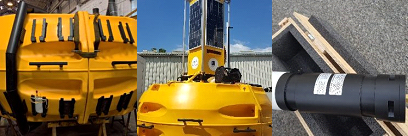 BIOCOLMAR is an offshore measurement station to provide the real data base from the intended MRE installing site. It has been designed to measure the physico-chemical parameters of the water as well as the sampling of the organisms colonizing offshore structures.
BIOCOLMAR is an offshore measurement station to provide the real data base from the intended MRE installing site. It has been designed to measure the physico-chemical parameters of the water as well as the sampling of the organisms colonizing offshore structures.Example of MRE applications
Marine growth is an inevitable phenomenon covering offshore structures in a short time after the installation. Their appraisal and colonization have many harmful effects on offshore structures and their periodical cleaning is an expensive operation. The convenience is more important for Marine Renewable Energy market. Indeed, the construction, operation and maintenance cost of MRE devices will affect the final price of the energy. BIOCOLMAR allows monitoring MRE installation sites and collecting environmental and marine growth data in order to optimize the design and maintenance costs of offshore structures.Key characteristics
- It could provide the data for fixed and floating MRE devices as well as the mooring line
- It is adaptable to the environmental condition along with the possibility of integration
- it is light in weight and adaptable for the different measurement levels and time in different depth ranges
- it is a temporary measurement system and can be uninstalled after the project
Equipment
The station has been designed in Nantes, France and is fabricated in La Rochelle. He first generation is installed in La Basse Michaud located in French Atlantic Coasts.Services
BIOCOLMAR is an offshore measurement station which allows collecting the environmental data and monitoring the MRE installation sites.UNDERWATER STEREO CAMERA
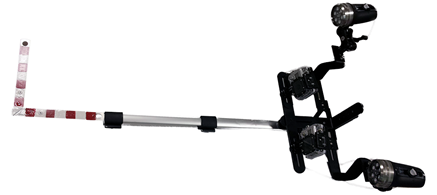 The stereo rig was designed to be a standalone tool for obtaining physical measurements and recovering the 3D shape of structural components as part of underwater inspections.
The stereo rig was designed to be a standalone tool for obtaining physical measurements and recovering the 3D shape of structural components as part of underwater inspections.
Key characteristics
- Self-contained unit –this device is capable of reconstructing fully scaled 3D models thanks to the on-board measuring stick and the two artificial light sources on the device mean that it can operate in low-light conditions, such as those typically encountered during underwater inspections.
- Redundancy – If for some reason it is not possible to use stereo imaging to automatically recover 3D models, the on-board measuring stick, which is always visible in the acquired imagery, allows us to estimate the physical size of objects in the scene nonetheless, as long as the measuring stick is held close to the object of interest.
- In-depth testing – We developed an experimental evidence base around several lighting conditions and several distances between the cameras and the subject in order to characterize the performance of our stereo system (in terms of producing good 3D reconstruction results).
Equipment
The device consists of two GoPro cameras, two waterproof artificial lights, and an adjustable measuring stick. The two GoPro cameras simultaneously photograph a scene from slightly different perspectives. By taking photographs of a target from at least two different vantage points, 3D information of the scene becomes encoded in the imagery.Services
This device is intended to facilitate inspections of all offshore and marine structures including marine renewable energy devices.Example of MRE applications
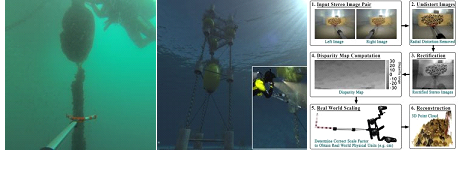 This device can be used for quantifying cracks and visible damage forms, such as corrosion, which appear on the surface of MRE structures. However, to leverage the full potential of this device, we should look at 3D imaging. The 3D information that is captured by this device can be used for volumetric measurements, documentation, and presentation to the general public. One specific application concerns measuring the shape of structural members that have been colonized by marine growth. Marine growth significantly increases the diameter and roughness of structural members. This introduces several problems; most notably, it increases drag forces and creates unpredictable hydrodynamic instabilities. These factors often cause a loss in structural performance and reliability, leading to shortened lifespans for MRE structures.
This device can be used for quantifying cracks and visible damage forms, such as corrosion, which appear on the surface of MRE structures. However, to leverage the full potential of this device, we should look at 3D imaging. The 3D information that is captured by this device can be used for volumetric measurements, documentation, and presentation to the general public. One specific application concerns measuring the shape of structural members that have been colonized by marine growth. Marine growth significantly increases the diameter and roughness of structural members. This introduces several problems; most notably, it increases drag forces and creates unpredictable hydrodynamic instabilities. These factors often cause a loss in structural performance and reliability, leading to shortened lifespans for MRE structures.Owners/operators of these structures, therefore, have a keen interest in monitoring the progression of marine growth so that they can choose the best times to carry out costly cleaning regimes, and so that they have more reliable estimates of the loading on a structure. This is useful when assessing a structure’s eligibility for requalification schemes, which ultimately, can prolong a structure’s in-service life. The diameter and roughness vary around and among structural components, and require full 3D shape of the marine growth to be computed.
History of projects
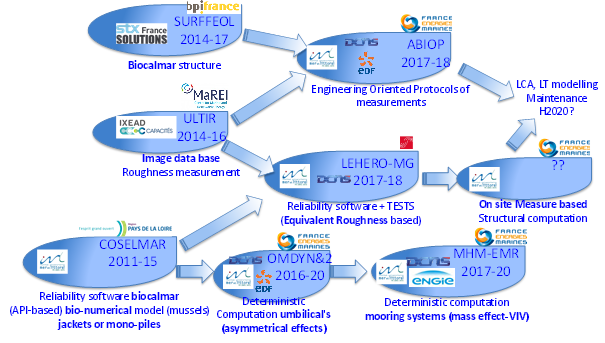
TOCCME Project
Autonomous multi-parameter probe for measuring the uncertainty of measurement of the environmental parameters of degradation of materials at sea;
Degradation models of offshore energy systems, based on in situ data acquisition, are set up to predict, optimize and therefore reduce the cost of their maintenance (corrosion, diffusion mechanisms, marine growth).
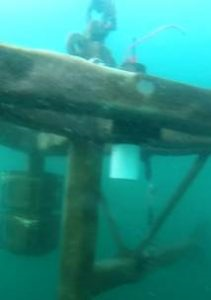 Degradation models of offshore energy systems are sensitive to the quality of input data. As a result, the marine renewable energy industry expects robust measurement protocols and quantification of uncertainties to better predict the aging of offshore structures.Key parameters such as temperature, salinity and chlorophyll A are among the important environmental variables used to evaluate the marine growth phenomenon on offshore structures. However, measurements of these parameters encounter problems related to data consistency and long-term comparability. Currently, EMPIR project submission frameworks have identified that efforts are needed to ensure complete metrological consistency of measurements, to harmonize measurement procedures and instrument calibration methodologies, and to provide good reference materials. This project aims to develop traceable and validated methods for measuring data trends on seawater parameters such as salinity, temperature, conductivity, pH, dissolved oxygen and chlorophyll A, as well as measurement protocols with uncertainties lower than the natural variation of the parameters.
Degradation models of offshore energy systems are sensitive to the quality of input data. As a result, the marine renewable energy industry expects robust measurement protocols and quantification of uncertainties to better predict the aging of offshore structures.Key parameters such as temperature, salinity and chlorophyll A are among the important environmental variables used to evaluate the marine growth phenomenon on offshore structures. However, measurements of these parameters encounter problems related to data consistency and long-term comparability. Currently, EMPIR project submission frameworks have identified that efforts are needed to ensure complete metrological consistency of measurements, to harmonize measurement procedures and instrument calibration methodologies, and to provide good reference materials. This project aims to develop traceable and validated methods for measuring data trends on seawater parameters such as salinity, temperature, conductivity, pH, dissolved oxygen and chlorophyll A, as well as measurement protocols with uncertainties lower than the natural variation of the parameters.
The project will create and validate new reference documents for the measurement of physico-chemical parameters of seawater. A protocol for the calibration and routine control of field sensors of the variable will also be established and tested. In addition, reference standards for in situ measurements of Chlorophyll A will be defined and tested. The traceability of the parameter records will allow the combination of databases of different users, which is currently hampered by the use of non-harmonized calibration practices.
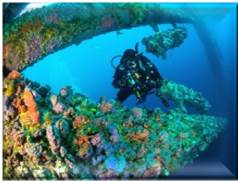 Expected technical and economic impact
Expected technical and economic impact
Degradation models of offshore energy systems, based on in situ data acquisition, are set up to predict, optimize and therefore reduce the cost of their maintenance (corrosion, diffusion mechanisms, marine growth).
Background
In recent years, marine environmental monitoring programs have been set up to assess the impact of marine renewable energy structures such as offshore wind projects and to optimize their design. The requirements of environmental measures with respect to marine renewable energy infrastructure (accuracy and stability over time) are still at an early stage where researchers ‘materials’ and ‘structures’ need to work more closely with metrological scientists to both to measure the impact of the technologies on the environment, and to evaluate the impact of the marine environment on the technologies (corrosion, marine growth, …).Scientific advances and innovation
 Degradation models of offshore energy systems are sensitive to the quality of input data. As a result, the marine renewable energy industry expects robust measurement protocols and quantification of uncertainties to better predict the aging of offshore structures.Key parameters such as temperature, salinity and chlorophyll A are among the important environmental variables used to evaluate the marine growth phenomenon on offshore structures. However, measurements of these parameters encounter problems related to data consistency and long-term comparability. Currently, EMPIR project submission frameworks have identified that efforts are needed to ensure complete metrological consistency of measurements, to harmonize measurement procedures and instrument calibration methodologies, and to provide good reference materials. This project aims to develop traceable and validated methods for measuring data trends on seawater parameters such as salinity, temperature, conductivity, pH, dissolved oxygen and chlorophyll A, as well as measurement protocols with uncertainties lower than the natural variation of the parameters.
Degradation models of offshore energy systems are sensitive to the quality of input data. As a result, the marine renewable energy industry expects robust measurement protocols and quantification of uncertainties to better predict the aging of offshore structures.Key parameters such as temperature, salinity and chlorophyll A are among the important environmental variables used to evaluate the marine growth phenomenon on offshore structures. However, measurements of these parameters encounter problems related to data consistency and long-term comparability. Currently, EMPIR project submission frameworks have identified that efforts are needed to ensure complete metrological consistency of measurements, to harmonize measurement procedures and instrument calibration methodologies, and to provide good reference materials. This project aims to develop traceable and validated methods for measuring data trends on seawater parameters such as salinity, temperature, conductivity, pH, dissolved oxygen and chlorophyll A, as well as measurement protocols with uncertainties lower than the natural variation of the parameters.The project will create and validate new reference documents for the measurement of physico-chemical parameters of seawater. A protocol for the calibration and routine control of field sensors of the variable will also be established and tested. In addition, reference standards for in situ measurements of Chlorophyll A will be defined and tested. The traceability of the parameter records will allow the combination of databases of different users, which is currently hampered by the use of non-harmonized calibration practices.
Updated on 16 November 2018.
